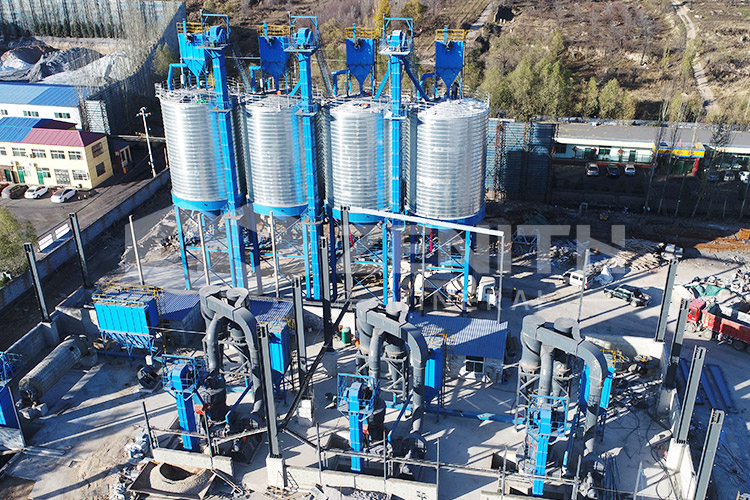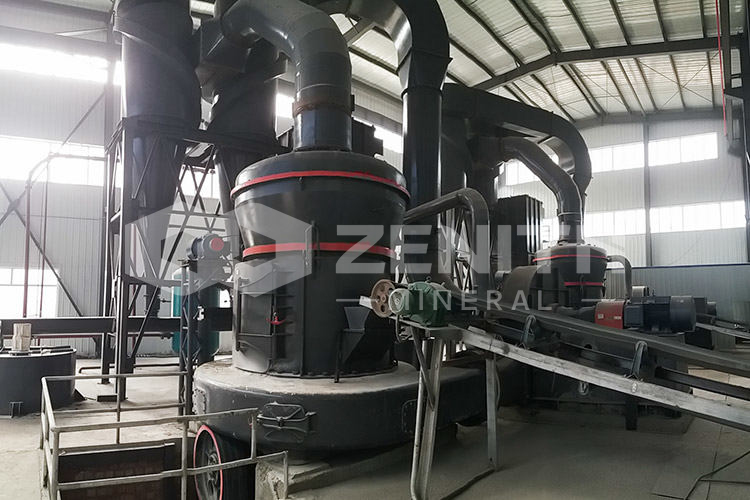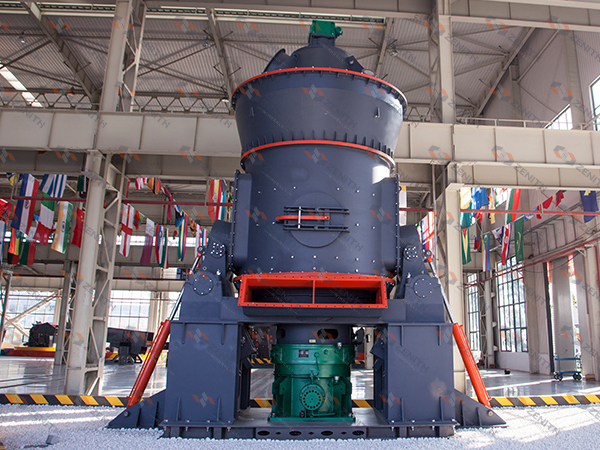Talc powdering process and equipment selection
2025-11-08 00:31:45
The transformation of raw talc into high-value powder requires precise engineering and specialized equipment. As a leading manufacturer in industrial grinding technology, Zenith Machinery has developed comprehensive solutions for talc processing that balance efficiency, quality, and operational costs.
Talc, a hydrated magnesium silicate known for its softness and plate-like structure, presents unique challenges in powder processing. The ideal equipment must preserve the mineral's inherent properties while achieving the desired fineness for various industrial applications.

Understanding Talc Processing Requirements
The talc powdering process typically begins with primary crushing of raw ore, followed by drying to reduce moisture content. The critical grinding stage determines the final product quality and application potential. Different industries demand specific particle size distributions:
- Coarse powder (1-3mm): Used in roofing materials, rubber compounds
- Fine powder (20-400 mesh): Suitable for plastics, paints, ceramics
- Ultrafine powder (400-1250 mesh): Required for cosmetics, pharmaceuticals
- Micro powder (1250-3250 mesh): Essential for high-end coatings and specialty applications
Equipment Selection Guide
Zenith's diverse product line offers tailored solutions for each processing stage and output requirement:
For Coarse Powder Production (0-3mm)
HM Series Hammer Mill represents the latest generation of coarse grinding technology. With capacities ranging from 3-50 T/H, this equipment features optimized cavity design and high manganese steel liners for extended service life. The partial working principle borrowed from crushers ensures uniform particle size distribution, addressing a common limitation in traditional coarse powder mills.
_1762533105027.jpg)
For Fine to Medium Powder (80-400 mesh)
MTW European Trapezium Mill stands out with its energy efficiency, consuming 60% less power than comparable ball mills. The modular impeller adjustment system allows quick fineness changes without equipment modification. With capacity up to 50 TPH for the largest model, this mill serves industries requiring consistent fine powder production.
MTM European Trapezium Mill brings over 30 years of practical refinement to talc processing. Its stability and material adaptability make it particularly suitable for operations prioritizing reliability over extreme fineness. The electromagnetic vibrating feeder ensures consistent material flow to the grinding chamber.
For High-Capacity Operations
LM Vertical Grinding Mill offers 24-hour continuous operation capability with automated control systems. Covering only 50% of the space required by ball mill systems, this vertical roller mill excels in large-scale mineral powder plants. The negative pressure operation eliminates dust spillage, meeting stringent environmental standards.

For Ultrafine Applications (up to 3250 mesh)
LUM Ultrafine Vertical Grinding Mill integrates German powder separation technology with Taiwanese grinding roller expertise. This advanced system produces powder with exceptional purity and whiteness, crucial for premium applications in plastics masterbatch, PVC, and artificial stone manufacturing. The hydraulic adjustment system simplifies maintenance of vulnerable components.
XZM Ultrafine Grinding Mill provides single-classification capability from 325 to 3000 mesh. The variable frequency drive on the classifier enables precise fineness control through simple panel adjustments. With energy consumption 70% lower than air-flow mills, the XZM series offers remarkable efficiency for high-value talc products.
_1762533105036.jpg)
Technical Comparison and Selection Criteria
When selecting talc grinding equipment, consider these key factors:
Production Scale: For small to medium operations (3-22 T/H), MTW/MTM trapezium mills provide excellent balance of cost and performance. Large-scale operations (up to 340 T/H) benefit from LM vertical mills' automation and space efficiency.
Fineness Requirements: Standard applications (80-400 mesh) are well served by trapezium mills, while specialized industries requiring ultrafine powder (up to 3250 mesh) should consider LUM or XZM series equipment.
Energy Efficiency: All Zenith mills incorporate energy-saving technologies, with vertical mills and trapezium mills typically consuming 30-60% less power than traditional ball mills.

Working Environment Considerations
Modern talc processing demands attention to environmental compliance and operator safety. Zenith's equipment designs incorporate pulse dust collectors, negative pressure systems, and sound insulation to minimize environmental impact. The automated control systems reduce labor requirements while ensuring consistent product quality.
With ISO, CE, and CU-TR certifications, Zenith grinding equipment meets international standards for quality and safety. Our global service network spanning 180 countries provides technical support and spare parts availability worldwide.

Conclusion
The optimal talc powdering solution depends on specific production requirements, target markets, and operational constraints. Zenith's comprehensive equipment range ensures that processors can select technology precisely matched to their needs, whether producing basic fillers or premium specialty powders. The continuous innovation in grinding technology continues to push the boundaries of what's possible in talc processing efficiency and product quality.
Frequently Asked Questions
What is the typical energy consumption for talc grinding equipment?
Energy consumption varies by equipment type and product fineness. Zenith's MTW and MTM series trapezium mills consume approximately 60% less energy than traditional ball mills, while our vertical mills offer additional savings through automated operation and optimized grinding mechanics.
How does particle size distribution affect talc application performance?
Particle size directly influences talc's functional properties. Coarser particles (20-400 mesh) provide reinforcement in plastics and rubber, while ultrafine particles (400-3250 mesh) deliver superior opacity, smoothness, and barrier properties in coatings and cosmetics.
Can the same equipment process different mineral materials?
Yes, Zenith grinding mills are designed for versatile mineral processing. However, optimal results require equipment selection based on material hardness, moisture content, and desired output characteristics. Our technical team can provide specific recommendations for mixed mineral operations.
What maintenance intervals are typical for talc grinding mills?
Maintenance frequency depends on operating hours and material abrasiveness. Generally, grinding elements require inspection every 800-1,200 hours, with major overhauls recommended at 8,000-10,000 operating hours. Zenith's easily accessible design reduces downtime during maintenance.
How does environmental regulation impact equipment selection?
Modern talc processing must address dust control, noise reduction, and energy efficiency. Zenith equipment incorporates pulse dust collectors, sound insulation, and energy-saving technologies to ensure compliance with international environmental standards including European CE directives.
What technical support is available after equipment installation?
Zenith provides comprehensive after-sales support through our global network of 30+ overseas offices. Services include installation supervision, operator training, preventive maintenance programs, and 24/7 technical assistance to maximize equipment performance and longevity.
How does automation improve talc powder quality consistency?
Automated control systems maintain optimal grinding parameters regardless of feed variations, ensuring consistent particle size distribution. Our LM and LUM series mills feature intelligent controls that adjust operation in real-time, reducing human error and product quality fluctuations.








